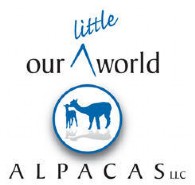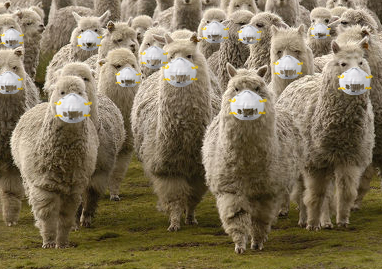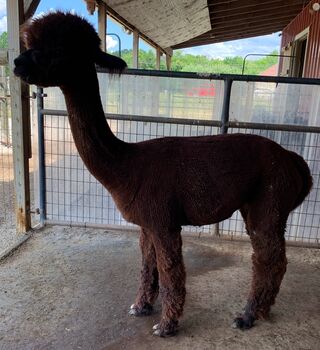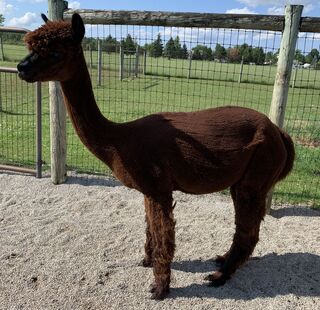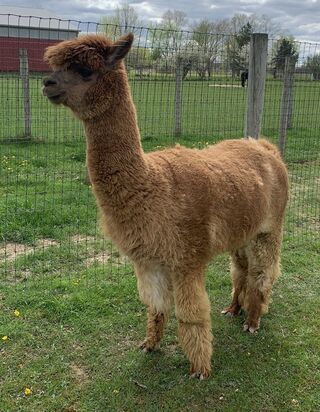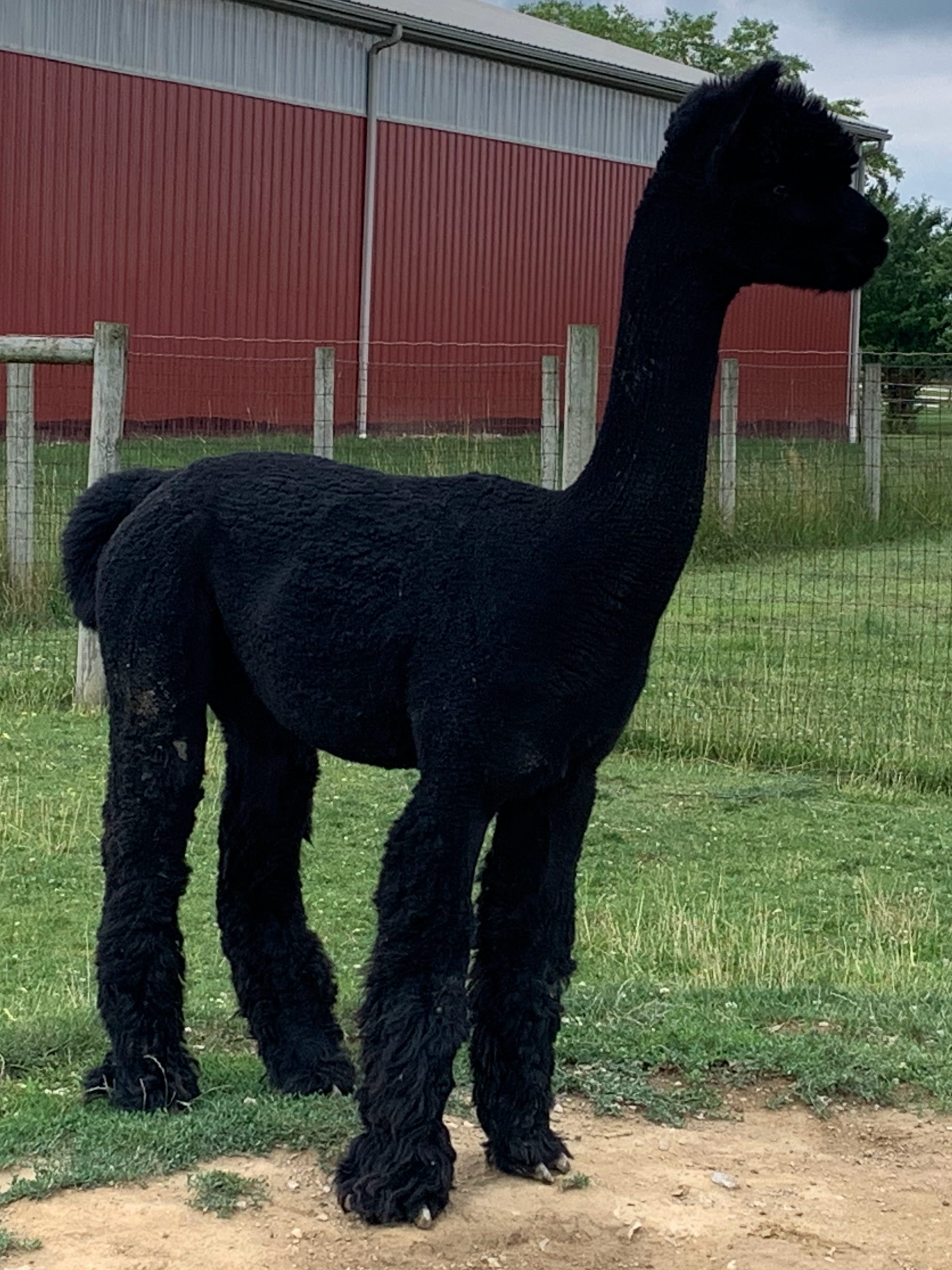Health Care
Recommended Practices in Caring For Llamas & Alpacas
INTRODUCTION
Llamas and alpacas are domesticated South American members of the camelid family. These animals differ significantly from other species. Beyond the minimums required to sustain any life, the specifications for their care are unique. Llamas and alpacas can thrive in a wide range of environments, from ranches with vast open ranges to small suburban properties, and in almost every type of climate and geography. Some live in dry lot conditions and exist entirely on nutrition provided by their owners, while others live on properties with abundant pasture. These animals thrive in an environment where the relationship with humans and other animals is peaceful, basic security is provided, and life activities that fit their nature are included. With proper care from responsible stewards, alpacas and llamas typically enjoy good health, with an average lifespan of 15-to 20+-years.
This document was prepared by a committee of experienced llama and alpaca owners, and reviewed by veterinarians and representatives of various recognized llama and alpaca organizations. It contains recommended practices based on up-to-date scientific knowledge and community-wide husbandry expertise. It is intended as an educational foundation for recommended camelid care and, as such, to provide the basis for continuity and consistency in that care.
In addition to the general practice recommendations, region-specific conditions may exist, necessitating additional or differing measures in those locales to ensure the health and well-being of the animals. Where available, a camelid-experienced veterinarian should be consulted for local or regional needs. Additionally, consider joining one or more llama and/or alpaca organizations for continuing education, networking and local owner support. The references provided at the end of this document give more detailed and extensive coverage for various aspects of camelid care.
All animals deserve the best possible environment in which to thrive. There are many “right” ways to assure this. The purpose of Recommended Practices is to provide basic and important information on providing that environment for llamas and alpacas, beyond minimum requirements. Each camelid caregiver will have his or her practices to assure animal well-being, based on knowledge of the herd individuals, as well as sound husbandry.
Minimum Standards of Care for Llamas and Alpacas, a separate reference for officials responsible for assessment and intervention in cases of abuse, neglect or serious mismanagement, is endorsed as the uniform tool for judging that absolute minimal care is being provided .
NUTRITION
- Provide continuous access to potable water. The animals should not be required to break through ice or eat snow for their water. In extreme heat, water that is cool to the touch encourages consumption and helps avoid dehydration. In extreme cold, lukewarm water does the same.
- Provide daily access to quality, mold-free hay and/or nutritious pasture. In general for adult maintenance, total feed should contain 10-12% crude protein, dry matter basis, offered at the rate of 1.5% – 3% of body weight. Growing youngsters and late term pregnant or early lactating females may need 12-16% crude protein, dry matter basis. This may be obtained by using forage with higher protein content and/or a high-protein supplement. Because of subtle differences, llamas require the lower levels of protein while alpacas’ requirements are higher. However, individual animals can require more or less feed. Use Body Condition Scoring (BCS) (see page 4) and consult with a veterinarian or animal nutritionist to determine individual needs.
- If not pre-mixed into a supplemental feed being offered, provide free choice access to minerals appropriate for the species and the region. (A loose form is preferred.) Take any known mineral toxicities into consideration (e.g., copper, selenium).
- Feed a cria that requires human intervention by utilizing a feeding tube or bottle regimen that minimizes human bonding. Supplemental feeding by humans should be done only when medically necessary and the cria should continue to reside with its mother and/or the herd to ensure appropriate behavioral development. Inappropriate animal-human bonding may result in severe behavior problems.
PHYSICAL ENVIRONMENT
- Provide natural or man-made shelter with sufficient ventilation and space to allow each llama and alpaca to find relief from environ-mental conditions (e.g., extreme cold, heat, humidity, precipitation, wind chill, waterlogged ground/standing water during periods of wet weather).
- Provide a heating source or cooling measures when temperatures reach extremes, whether at home or traveling. Heat stress (hyperthermia) and hypothermia are life-threatening conditions. (See Safekeeping section for more information.)
- In enclosed areas, manure should be routinely disposed of, mud prevented, and any urine build-up treated to prevent parasite problems and disease.
- Provide fencing of sufficient height and strength to safely contain alpacas and llamas in designated areas. Fencing design should prevent animals from becoming entangled. Barbed wire is not recommended.
- House only the number of animals per enclosure that allows free and independent movement of each animal when not at work with a human, as well as the ability to exercise each day. Space requirements for llamas are generally greater than those for alpacas. Physical location and conditions (i.e., terrain, vegetation, availability of pasture, etc.), as well as herd composition (males, weanlings, females, etc.) will dictate the appropriate number of animals that can live within a defined area. Also, know your local zoning laws.
- Llamas and alpacas are browsing and grazing animals. Where possible, provide them the opportunity to browse and graze daily.
- In temporary situations such as at shows, or in case of health problems, llamas and alpacas may be kept in small spaces for a limited period of time. For longer periods (e.g., animals that are in quarantine), they should be exercised each day.
SOCIAL ENVIRONMENT
- Llamas and alpacas need to live in association with other herd animals, preferably at least one other llama or alpaca (unless a mature llama is serving as a guard llama). Without appropriate companionship, most will fail to thrive. Therefore, it is recommended that llamas and alpacas never live alone. A llama or alpaca should not be raised as a single baby away from any other camelids.
- Alpha or highly territorial males may need to be corralled separately, but should be within sight of other alpacas or llamas.
- Gelded llama males that do not exhibit breeding behavior or adult llama females can be used as single guardian animals with sheep, goats, alpacas, cattle or miniature horses. They cannot, however, successfully defend against such predators as cougar, bear, or dog packs without quick support from humans or guardian dogs.
- Crias should remain with their dams until at least four months of age. (Six months is recommended to promote normal behavior and to assure good nutrition (allow for maturation of the forestomach)). When deprived of this herd environment during their growth and development, they can develop severely abnormal ways of relating to humans at sexual maturity or earlier.
- Crias should never be sold as pets to be intentionally bottle-fed. Bottle-feeding should take place in a herd environment and only when medically necessary to ensure the health of the dam and/or the cria.
ROUTINE HUSBANDRY
- De-worm and vaccinate as needed in your locale to control parasite infection and disease. Seek guidance from knowledgeable local sources. Specific geographic areas are infested with meningeal worm, (P. tenuis) which can cause fatal damage to llamas and alpacas. Seek veterinary advice for preventive measures.
- Hands-on physical assessment of each animal should be done regularly, at least twice a year. This should include weighing and/or body scoring (See Fig. A), mucous membrane color check (inner eyelid or gums), condition of incisors, and fiber coat evaluation. Weight loss, body score changes, pale color, listlessness or clumped stool should be cause for a more detailed health assessment such as fecal analysis, veterinary exam, and blood analysis. Excess weight gain should prompt a review of diet and activity.
- Trim toenails if growth threatens lameness or compromises sound-ness. (See Figure B)
- In warm to hot and especially humid climates, shear the fleece of most alpacas and thick or long fibered llamas every year. Animals with thin or slow-growing fiber may be shorn every other year. Animals with matted fleece should be shorn if prevention of heat stress or control of infestation by external parasites are issues in their environment.
- Geld non-breeder males no earlier than 12 months, with 18-24 months recommended. Most geldings may be safely penned with either males or females once sufficient time has passed after gelding to ensure infertility. (To be safe, about 2 months.)
- Do not breed animals with genetic defects or place them into situations where they can reproduce.
- Provide immediate veterinary care for an ill or injured alpaca or llama, including dental care if the animals’ ability to properly process food is compromised.
SAFE HANDLING
- Fit halters on llamas and alpacas so that the nosepiece allows for chewing, yet cannot slide down onto the soft cartilage of the nose and cut off breathing. Crown piece should be snug, holding the noseband in place. Improperly fitted halters can be life-threatening because, unlike some animals, camelids must breathe through their noses.
- Because they are often transported, train llamas and alpacas to halter, lead, and load into a transport vehicle. This will result in less stress and simplify transport activities.
- Avoid wrapping a lead rope around your hands or body in order to prevent serious injury in the event a llama or alpaca suddenly takes flight.
- Exercise great caution when transporting llamas and alpacas during extreme weather, either hot or cold. The transport vehicle must be well-ventilated, and it is essential to check for signs of heat stress (flared nostrils, lethargy) and/or hypothermia (shivering) at reason-able intervals, both while on the move and when parked.
- Leave llamas and alpacas untied during transport. Llamas and alpacas tied during transport can suffer severe injury or death. On rare occasions, it may be prudent to tie animals for safety, as when transporting in a vehicle they could jump out of (not recommended).
- Do not leave llamas or alpacas unattended in a livestock chute.
- Before packing with llamas, take time to learn the saddle system to be used, how to secure it without causing injuries, and how to balance and pack it with weight appropriate for the specific llama. Do not load a llama under the age of two years, and do not fully load a llama until it is well-trained, well-conditioned, and near physical maturity, usually reached at 4 years old.
- Select only alpacas or llamas that interact appropriately with people for use in making direct contact with the public. Props and settings should be safe for the animal, the handler and the public.
- Spitting is part of a highly sophisticated body language used by camelids to express displeasure, to establish and maintain social order in the herd, and to respond to a serious threat. Camelids accustomed to positive interaction with people will not normally spit at humans.
SAFEKEEPING
- Never leave halters on unsupervised llamas or alpacas when they are released to their living environment.
- With proper halter fit, animals that have been trained for tethered grazing can usually be left unsupervised for short periods of time, such as while on a pack trip, but must not be left staked out full time.
- Intact males, if kept together, should normally be penned according to age, size, and disposition. Their behavior should be monitored to guard against excessive fighting. When fighting or intimidation threatens any individual llama or alpaca with malnutrition or serious injury, change the grouping.
- Examine the “fighting” teeth of group-housed males at least once per year and trim when needed to prevent injury to one another.
- Provide multiple feeding stations to ensure that passive animals have equal access to hay and to reduce possible conflict over food.
- Intact males, beginning at 6-8 months of age, should be kept separate from females of all ages. It is possible for a precocious male to impregnate a female. Exception: a stud kept with his females for breeding purposes.
- When introducing a female with a cria at her side to a stud for breeding, take care to ensure that the stud does not breed or injure the youngster.
- For the safety of other livestock, blunt the canine or “fighting teeth” of male llamas and alpacas as soon as they fully erupt through the gum line. This generally occurs after two years of age. Trim every 1-2 years until teeth no longer grow (7-8 years old).
- Llamas and alpacas must be safeguarded against eating poisonous plants or other dangerous materials, both at home and on the road-side or trail. Owners and caretakers of llamas and alpacas should make a point of becoming knowledgeable about the plants that are toxic or deadly poisonous.
- Camelids must never be used for human activities that will inevitably lead to the animal’s trauma and/or death, such as being hunted, used for roping practice, or used as live prey for “ranch” predators.
- The rare llama or alpaca that becomes completely unmanageable should be placed with an experienced rescue person or group, rather than given away or sold without disclosure of the problem.
- Hyperthermia (HEAT STRESS) and hypothermia are life-threatening conditions requiring immediate recognition and response, at home or while traveling.
- a. Initial and often subtle signs of heat stress are elevation of core temperature over 104 F (normal is 99.5- 101.5 F), heart rate over 80/minute (normal is 48-68 beats/minute), increased respiratory rate over 40/minute (normal is 10-30 breaths/minute), panting, flared nostrils, lethargy, decreased appetite, reddened skin, and swollen scrotum. Intervene with rapid cooling, using cool or cold water, on front of neck, legs, armpits, underbelly. groin and under tail. Do not wet topline. Also use shade, fans and cool drinking water. Important: Use a rectal thermometer to monitor core temperature of afflicted animal as treatment progresses, as well as to check temperatures of other animals in herd. Consult your veterinarian for assistance.
- Far more ominous signs of advanced heat stress are de-creased urination progressing to renal shutdown, open mouth breathing, trembling, weakness, abortion, decreased mental function, and convulsions. Death can follow quickly without immediate veterinary intervention.
- NOTE: Heat stress risk is higher in (but not limited to) humid areas. Factors such as obesity, heavily matted fiber, age (old or very young), illness and strenuous exercise add to the risk in any region. When it is hot, check your animals carefully!
- b. Hypothermia can occur when temperatures dip to extremes. Wind and wet weather, combined with low temperatures, greatly increase the danger of hypothermia. Most at risk are newborns, who have minimal insulation and poor thermo-regulation, and the very old, very thin or light-fibered animal. Signs include decreased body temperature, shivering, de-creased heart rate, depression and, in extreme cases, slow and shallow breathing. Intervention includes providing deep straw bedding in a dry shelter with protection from wind, blankets, coats, hair dryers to warm wet exposed areas such as ears, lukewarm drinking water and close proximity to the warmth of other animals. Warm water enemas may be helpful in severe cases. Alpacas and llamas may need extra calories from supplements (e.g., corn) in very cold weather, but use in moderation to prevent acidosis.
Shearing the fiber in early springtime, ahead of severe heat, is a preventive for heat stress and also gives time for adequate fiber to grow for winter warmth.
ADDITIONAL RESOURCES
Books
Caring for Llamas and Alpacas, A Health and Management Guide, Clare Hoffman, DVM & Ingrid Asmus; Rocky Mountain Llama and Alpaca Association c/o Janice Adamcyk, 39420 Olson Court, Kiowa, CO 80117-9604, (303) 621-2960; 2nd Edition 1998.
Llama and Alpaca Neonatal Care; Bradford B. Smith, DVM, PhD, Karen I. Timm, DVM, PhD, Patrick O. Long, DVM. Clay Press, 1996.
Medicine and Surgery of South American Camelids, Murray E. Fowler, DVM; Blackwell Publishing, 2121 South State Ave., Ames, Iowa 50014-8300 (515) 292-0140, 2nd Edition 1998.
The Complete Alpaca Book, Eric Hoffman, Bonny Doon Press, Santa Cruz, CA (831) 426-8649, [email protected], 2003
Pamphlets and Periodicals
Alpacas Magazine & OneVoice
5000 Linbar Drive Suite 297, Nashville, TN 37211
(615) 834-4195 http://alpacainfo.com
American Livestock Magazine
PO Box 578 Gatesville,TX 76528
(888) 439-2748
ILR Educational Pamphlets: Obtain from www.lamaregistry.com
PO Box 8, Kalispell, MT 59903
(406) 755-3438
International Camelid Quarterly
Rysko Pearson Productions 70 MacEwan Ridge Pl. NW Calgary, Alberta, Canada T3K 3MI
(403) 275-5170 www.llamas-alpacas.com
Pack Llama Trial Association
7295 Churn Creek Road, Redding, CA 96002
www.packllama.org
Teaching Programs at Schools of Veterinary Medicine
Colorado State University Voss Veterinary Teaching Hospital
(970) 297-4471
www.cvmbs.colostate.edu
Ohio State University College of Veterinary Medicine
(614) 292-6661
www.vet.ohio-state.edu
Oregon State University College of Veterinary Medicine
(541) 737-2858
www.oregonstate.edu/vetmed
Tufts University School of Veterinary Medicine
(508) 839-7926
www.tufts.edu/vet
Washington State University College of Veterinary Medicine
(509) 335-0741
www.vetmed.wsu.edu
Websites of Organizations
www.alpacainfo.com Alpaca Owners & Breeders Assn. Inc. (AOBA)
www.galaonline.org Greater Appalachian Llama & Alpaca Assn. (GALA)
www.icinfo.org International Camelid Institute
www.packllama.org The Pack Llama Trial Association
www.rmla.com Rocky Mountain Llama Association (RMLA)
Registries
www.alpacaregistry.com Alpaca Registry, Inc. (ARI) (402)437-8484
www.lamaregistry.com International Lama Registry (ILR) (406)755-3438
Acknowledgements
These Recommended Practices were developed by the Standards of Care Committees charged by Camelid Community with writing and gaining broad-based consensus on those practices. They are based on detailed input from a wide range of llama and alpaca owners, breeders, academics and veterinarians from across North America who offered suggestions as part of extensive outreach.
Support for the project has come in various forms – responses to questionnaires, donations of seed money, research, writing, editing, discussion, donated graphic arts and production, and veterinarian and legal document review. To all those who participated in the development of this document, the Standards of Care Committees, which became the Camelid Community Standards of Care Working Group, extend a sincere thank you.
Appreciation is extended to the following individuals, who have made special contributions in their areas of expertise.
David E. Anderson, DVM, MS, DACVS, (OH); Karen Baum, DVM, (VA); Patrick Long, DVM, (OR); Leah & Allan Dewald, MD, (SD); Bob Mallicoat, JD, (CA); Murray Fowler, DVM, (CA); Ty McConnell, DVM, (CA); Nancy Irlbeck, Ph.D., (CO); Jeanne Rankin, DVM, (MT); Michelle Kutzler, DVM Ph.D., (OR); Cheryl Tillman, DVM, (OR).
Camelid Community Standards of Care Working Group members are: Joyce Abrams (OR) and Hilary Ware (ME), co-chairs; Alvin Bean (NC); Dave Belt (Canada); Ruth Epstein-Baak, Ph.D. (CA); Barbara Greer (MO); Julie Ann Jarvinen, DVM, Ph.D. (IA); Judy Morgenstern (NJ); Teri Nilson-Baird (CO); Sherry Sheridan (OR); Norma Stevens (CA); Debby Ullrich (CA); Marsharee Wilcox (MD)
This document may be reproduced without permission, in its entirety only, as long as the copyright citation is included.
©2005, Camelid Community Standards of Care Working Group
Send mail to [email protected] (Norma Stevens) with questions or comments about this web site.
Sunday, August 6, 2023
